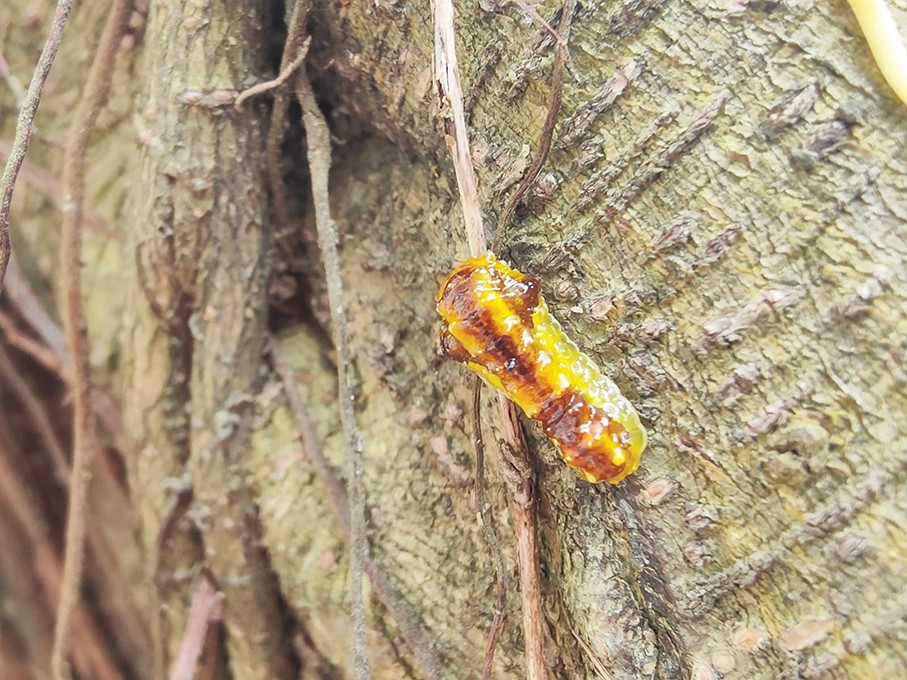The Municipal Affairs Bureau (IAM) said in a statement yesterday that work will be carried out in phases from this week through next month to control and prevent infestations by the Phauda flammans moth species on Chinese Banyan trees.
The bureau’s tree maintenance staff have recently discovered that Chinese Banyan trees in multiple districts have been affected by the seasonal pest, causing sparse leaves on tree crowns, according to the statement.
Preventive and treatment medication to suppress infestations were implemented at once, while notices have been displayed on trees where pesticides were applied.
The statement noted that the insects breed around two to three times a year, with their larvae feeding on leaves of trees in the Ficus genus such as Chinese Banyan trees, Mountain Fig trees and Common Red-stem Fig Trees.
Infestations had previously occurred in the summer, the statement said, with the affected trees having been treated and made a recovery. But as autumn has arrived, infestations are occurring again.
Prevention and control work will be carried out in areas surrounding Avenida Panorâmica do Lago Sai Van (西灣湖景大馬路), Avenida da Praia Grande (南灣大馬路), Avenida dos Jardins do Oceano (海洋花園大馬路), Avenida dos Jogos da Ásia Oriental (東亞運大馬路) and Avenida do Aeroporto (機場大馬路), among others.
Members of the public are urged not to enter the pest control areas.
If one notices tree abnormalities, the bureau can be contacted via “IAM Connect” or on 2833 7676, the statement noted.


These undated handout photos provided by the Municipal Affairs Bureau (IAM) show the Phauda flammans and its larvae.








